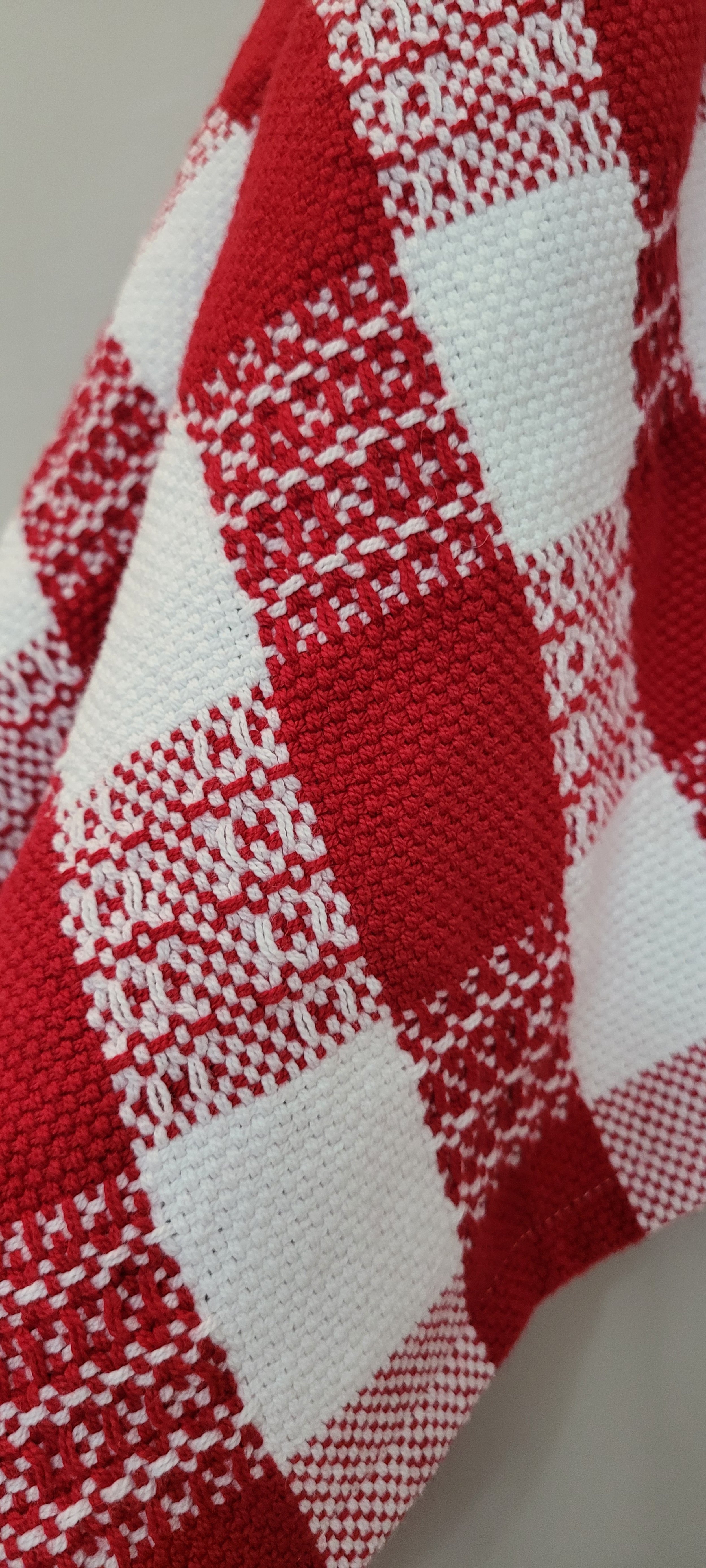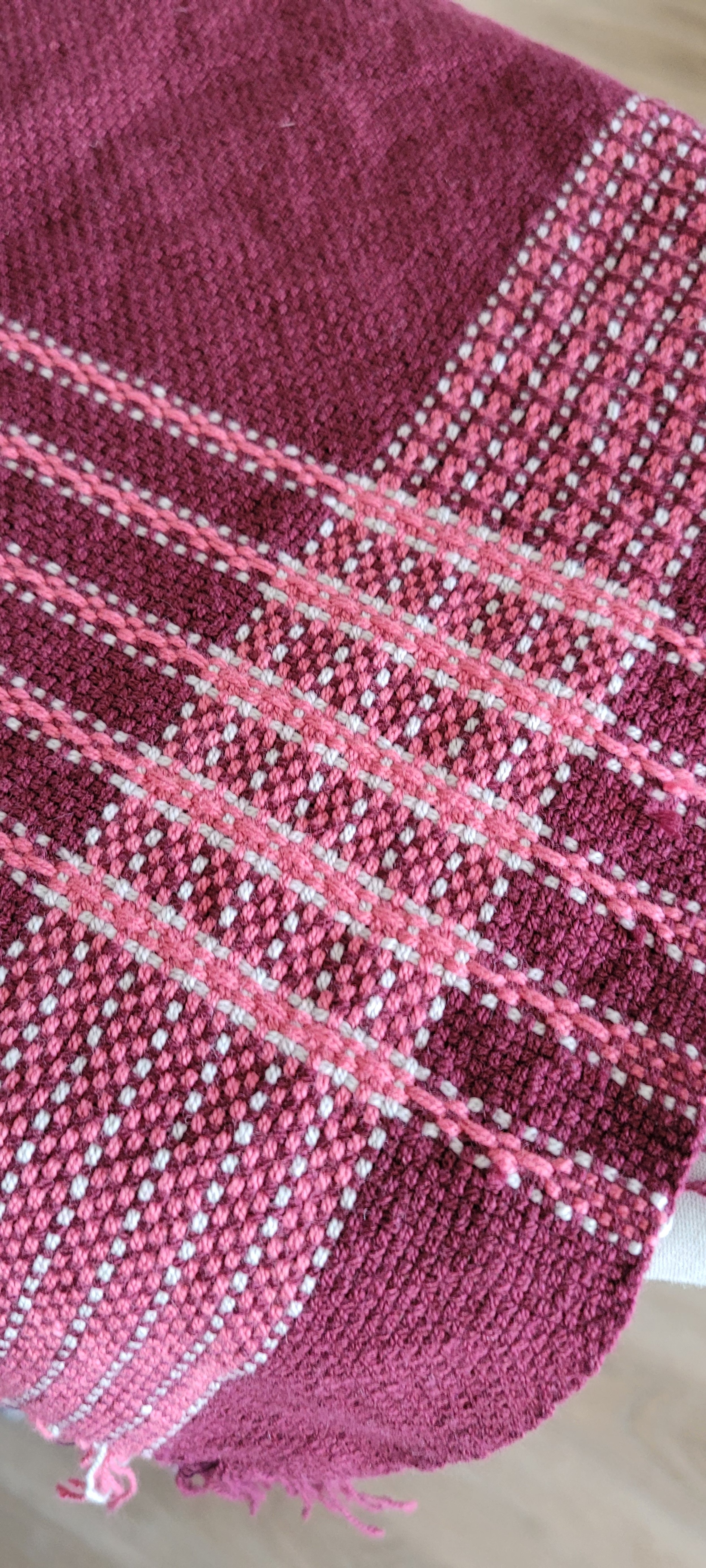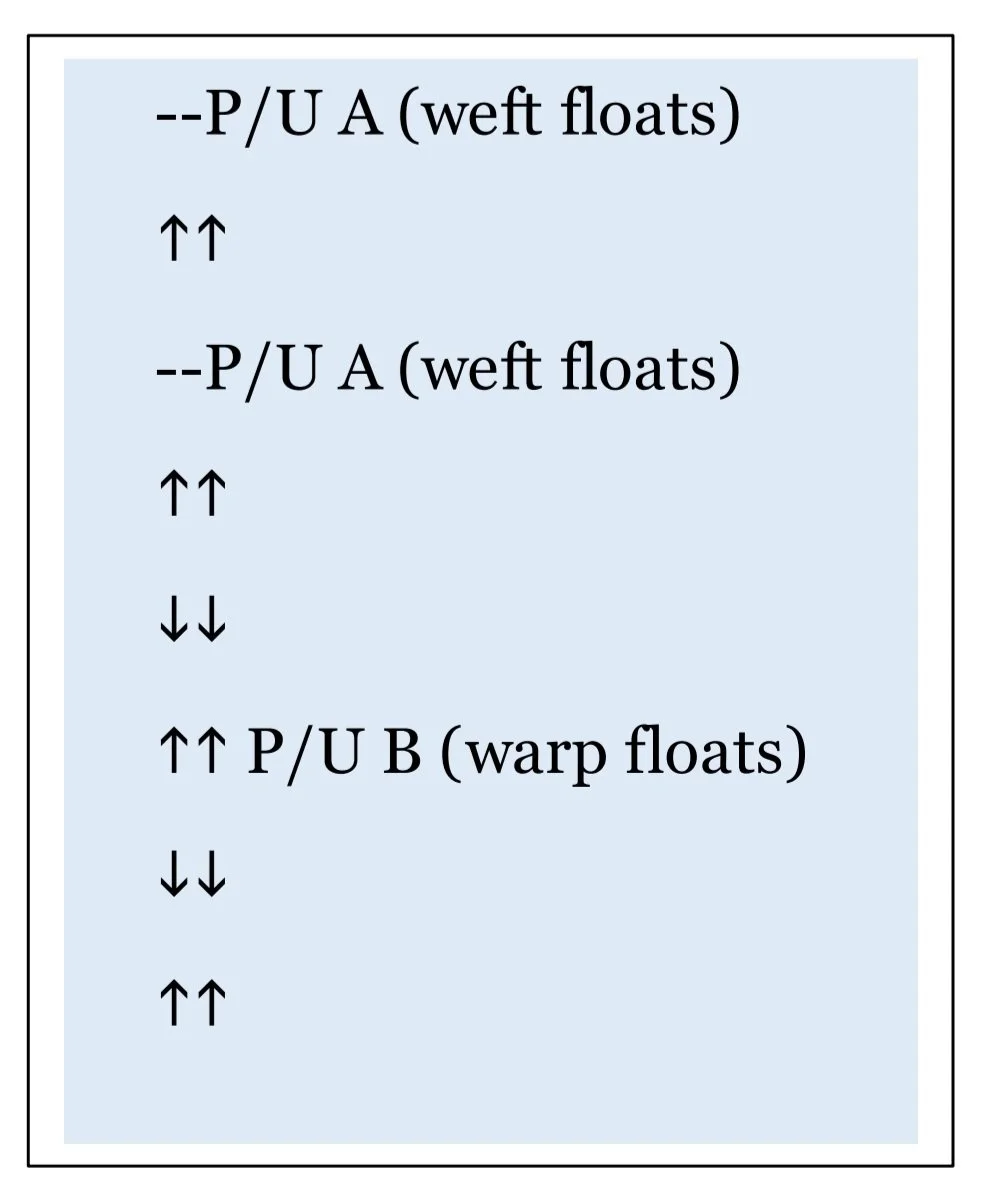Reading My Patterns
This is not a post about how to read drafts! I have no trouble reading a draft designed for a shaft loom but I honestly have a terrible time reading a draft for a rigid heddle that uses a pick-up stick, or multiple pick-up sticks. And I know that many rigid heddle weavers have the same trouble. I hear it all the time in the shop! So, I write my patterns differently from the standard rigid heddle patterns. There is no “typical” draft. In fact, I write my patterns very similar to (or in the style of) a knitting pattern. It’s pretty intuitive to me, but I still get lots of questions, so I thought I’d explain here.
I can’t add arrows in the text of my blog, so we’ll be referring to pictures. The following pictures are typical of what you will find in my patterns that require pick-up sticks or string heddles. Before we get into the symbols though, let’s quickly review pick-up sticks.
Pick-up sticks create warp and weft floats. Floats are created when either the warp ends skip over 2 or more weft ends or the weft skips over 2 or more warp ends. We often do this mistakenly. Done deliberately, some very intricate patterns can be created.
To create a weft float, the heddle is always in the neutral position with the pick-up stick behind the heddle and on edge. It will always follow an up-shed, or said differently, it will replace a down-shed. To create a warp float, the heddle is always in an up-shed and the pick-up stick is slid flat behind the reed. It always comes after a down-shed, or “adds to” the up-shed. For a more detailed look, here’s a previous blog post: Pick-up Sticks Will Explode Your World.
Ok, onto my method! I use arrows and dashes. Up arrow means the heddle is in the up position, downs arrow means the heddle is in down and the dash means the heddle is in neutral. Pretty easy right? The complications come when multiple symbols are used together like step 1 in the picture to the right. Read the symbols from left to right (just like reading this page) and then “read” your heddles and pick-up sticks from the front of your loom to the back. If you are using 1 heddle, the first symbol refers to the heddle, the second to the pick-up stick. So in the picture to the right, the first pattern line tells us that the heddle is in the neutral position and the pick-up stick is used (this will give us a weft float). We know that since the heddle is in neutral, the pick-up is turned on edge.
This next example is a little more complex because it uses 2 pick-up sticks. Step 1 tells us the heddle is in the neutral position and pick-up stick A is used on edge. Because the heddle is in neutral, we also know the pick-up is on edge (just in case the pattern doesn’t say). Steps 2 and 3 use just the heddle, first in the up-shed, then in the down-shed. The fourth step has 2 up arrows. Reading from left to right, and then from the front of the loom to the back, the heddle is in the up position and uses pick-up B. Since the heddle is up, we know that the pick-up will be flat behind the heddle.
Finally, the most complex! This pattern uses 2 heddles and 2 pick-up sticks. That means some steps have 3 symbols. Let’s look at step 1. Reading from left to right we see 2 dashes then P/U A. Reading our loom from front to back, this tells us that both heddles are in the neutral position and we will be using pick-up A. Since the heddles are in neutral, we know that pick-up A is on edge.
Step 2 has 2 up arrows, so both heddles are up and no pick-up is used. Step 3 is the same as step 1. Let’s move to step 6. Here we see 2 up arrows and P/U B. Again, looking at our loom, both heddles will be up, and pick-up B will be used. Since the heddles are up, we know that the pick-up stick will be flat behind the heddle.
Next blog I’ll discuss inserting pick-up sticks “The Rogue Weaver” way and things I’ve learned to make my pick-up life easier. I love pick-up patterns and the complex weaves that can be done with just a few sticks!
In the meantime, if this blog made sense to you, you can weave up any of my patterns!






